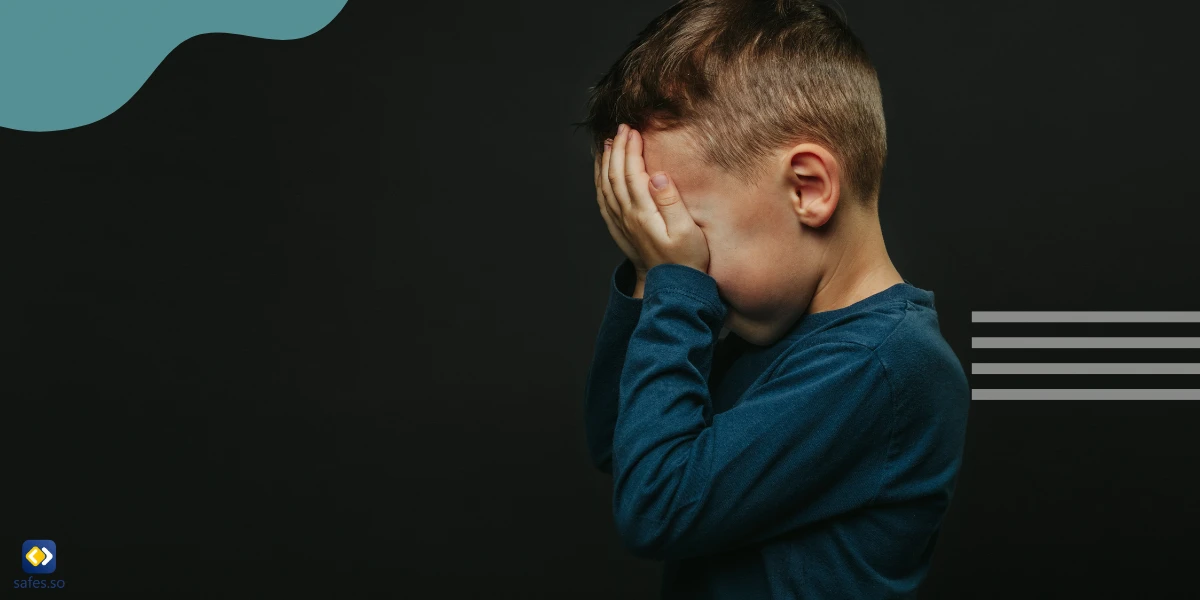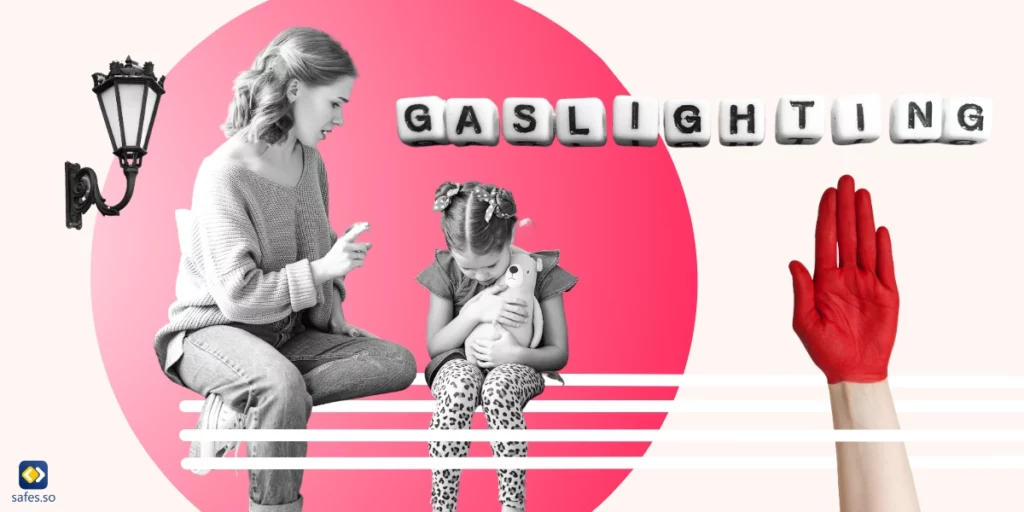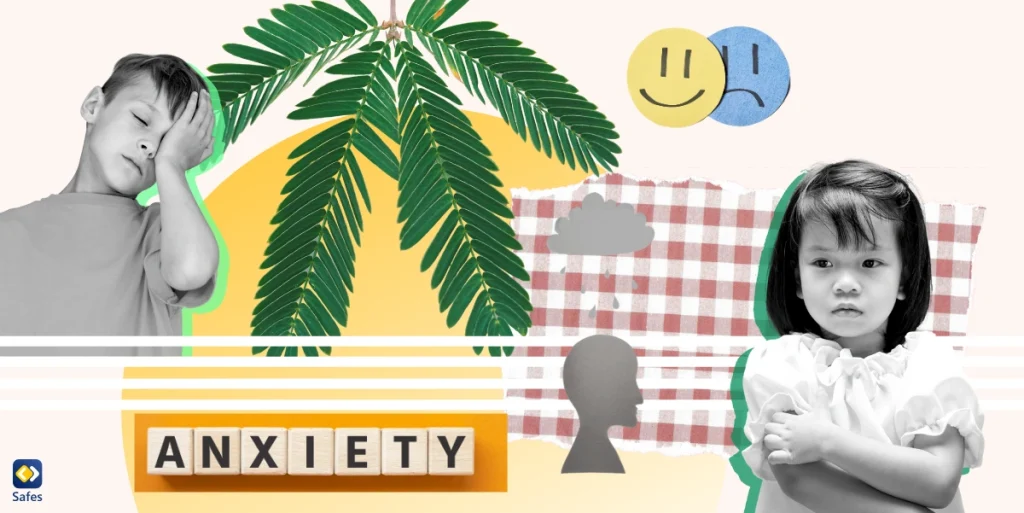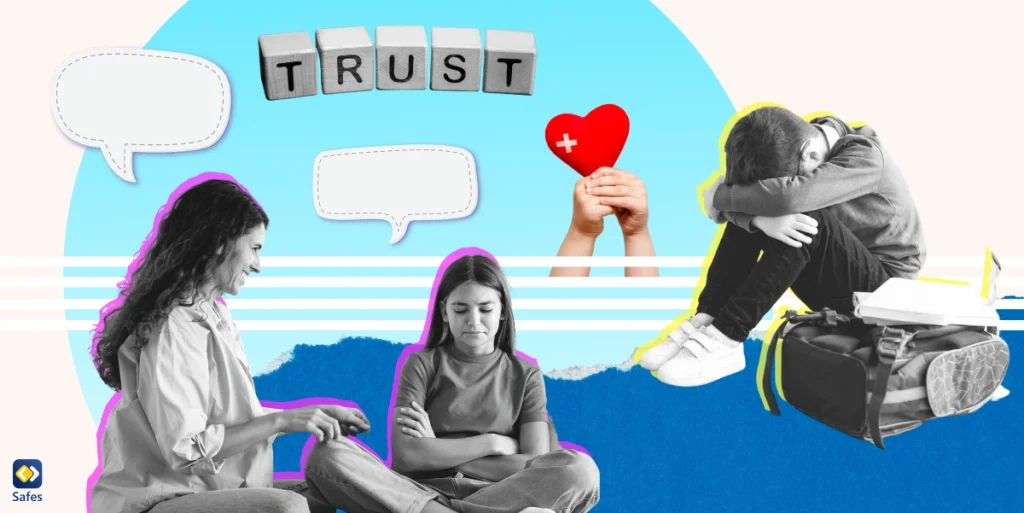Neglect is a form of child abuse that involves failing to provide a child with the necessary care, supervision, and support for their physical and emotional well-being. There are different types of neglect, including physical neglect, emotional neglect, educational neglect, and medical neglect. Neglect can have serious consequences for a child’s development and can lead to long-term emotional and psychological problems. In this blog post, we will focus on the different types of neglect while also discussing the importance of recognizing and addressing neglect in parent-child relationships.
Download and Start Your Free Trial of the Safes Parental Control App
Physical Neglect
Physical neglect is a form of child abuse that occurs when a caregiver fails to provide for a child’s basic needs for food, shelter, clothing, and medical care. This type of neglect is often characterized by inadequate supervision, unsanitary living conditions, and lack of appropriate medical treatment.
Examples of physical neglect include leaving a child alone for extended periods, failing to provide adequate nutrition, and denying medical care for serious conditions. Signs to look out for include poor hygiene, malnutrition, and unexplained injuries.
Physical neglect can have serious consequences for a child’s development, leading to physical and emotional problems, developmental delays, and even death in severe cases. It’s important to recognize and address physical neglect early on to prevent long-term harm to the child.
Emotional Neglect
Emotional neglect is a form of child abuse that involves failing to provide a child with the necessary emotional support, love, and care needed for their psychological well-being. Examples of emotional neglect include constantly criticizing a child, ignoring their needs and emotions, and failing to provide adequate supervision and guidance.
Signs of neglect can include a lack of interest in activities, low self-esteem, difficulty making friends, and depression. Emotional neglect can have serious consequences on a child’s development, leading to problems such as anxiety, low self-esteem, and difficulty forming healthy relationships later in life. It is important to recognize the signs of emotional neglect and seek help from a trusted professional to address the issue.

Educational Neglect
Educational neglect is a type of child neglect where the child is deprived of the opportunity to receive an education. This can happen when a parent or caregiver fails to enroll a child in school, provide necessary school supplies, or ensure that the child attends school regularly. Signs of educational neglect include chronic absenteeism, poor academic performance, lack of interest in school, and lack of basic skills such as reading and writing.
The effects of educational neglect on child development can be significant and long-lasting, including decreased opportunities for future success, decreased self-esteem, and decreased ability to form healthy relationships. It is important to address educational neglect early on to ensure that children receive the education they need to reach their full potential.
Medical Neglect
Medical neglect refers to the failure of a parent or caregiver to provide appropriate medical care to a child. This can include not seeking medical attention when a child is sick or injured, not following through with recommended medical treatment, or not providing necessary medication.
Signs of medical neglect may include untreated injuries or illnesses, poor hygiene, frequent absences from school, or delayed development.
The effects of medical neglect on child development can be serious and long-lasting. Without proper medical care, children may experience physical and cognitive impairments, chronic health conditions, or even death. Medical neglect can also lead to emotional and psychological trauma, as children may feel neglected or unimportant.
It’s crucial for parents and caregivers to seek medical care for their children and follow through with recommended treatment to ensure their well-being and future success. If you suspect medical neglect, it is important to report it to the appropriate authorities.

Consequences of Neglect
Educational neglect can have both short-term and long-term effects on a child’s development. In the short-term, children may struggle academically, have difficulty with socialization, and may experience emotional distress. In the long-term, educational neglect can lead to lower levels of educational attainment, reduced employment opportunities, and decreased earning potential.
Medical neglect can also have serious short-term and long-term effects on a child’s health and development. In the short-term, medical neglect can result in untreated illnesses, injuries, and developmental delays. In the long-term, medical neglect can cause chronic health problems, disabilities, and even death.
Legal consequences for neglect vary depending on the severity and type of neglect. Neglectful parents may face criminal charges, fines, and loss of custody or parental rights. In some cases, child protective services may become involved and remove the child from the home. It’s important to report any suspected neglect to the appropriate authorities to ensure the safety and well-being of the child.
How to Address Neglect in Parent-Child Relationships
When addressing neglect, it’s important to look for behavioral signs of neglect, such as poor hygiene, unattended medical needs, malnourishment, and developmental delays. These signs can indicate that a child is not receiving appropriate medical care, which can have serious and long-lasting effects on their physical, cognitive, and emotional development.
If you suspect neglect, it’s important to seek professional help immediately. This can include contacting a healthcare provider, social worker, or child protective services agency. These professionals can assess the situation and provide resources and support to the child and family.
There are also many resources available for support, including local and national organizations that provide counseling, education, and advocacy for children and families affected by neglect. These resources can help families access medical care, housing, and other essential services, and can provide emotional support and guidance to help families navigate difficult situations.

How Can Safes Help Avoid Neglect?
The Safes parental control app can be a useful tool in preventing neglect by providing parents with greater control over their children’s online activity. With features like content filtering, screen time management, and GPS tracking, Safes allows you to monitor and limit your child’s exposure to potentially harmful content or activities.
By promoting responsible and safe internet use, the app can also facilitate better communication between parents and children, which is an effective way to prevent neglect and abuse. Additionally, Safes educational articles can help parents develop better parenting skills by providing coaching and advice on how to improve infant stimulation, nurturing interactions, and other child care skills.
Safes is available on all devices powered by Android, iOS, Windows, and Mac. You can sign up for Safes’ free trial today to explore its features and enhance your parenting journey. Use the resources below to learn about parental controls and how to install Safes:
- Windows parental controls
- Macbook parental controls
- Parental controls on Android
- iPhone parental controls
Types of Neglect in Families: Conclusion
In conclusion, neglect is a serious issue that can have long-lasting effects on children. It’s important to recognize the different types of neglect, such as physical, emotional, and educational neglect, and to look for behavioral signs of neglect in children. Seeking professional help immediately is crucial in addressing neglect and preventing further harm. There are resources available for support, such as counseling and therapy, which can help parents and children overcome the effects of neglect.
Additionally, using tools like the Safes parental control app can improve parenting and help avoid neglect by giving parents greater control over their child’s online activity, promoting responsible and safe internet use, facilitating better communication between parents and children, and providing coaching and advice on parenting skills.
By being aware of the different types of neglect and utilizing available resources and tools, we can work towards preventing neglect and ensuring the well-being of children.
Your Child’s Online Safety Starts Here
Every parent today needs a solution to manage screen time and keep their child safe online.
Without the right tools, digital risks and excessive screen time can impact children's well-being. Safes helps parents set healthy boundaries, monitor activity, and protect kids from online dangers—all with an easy-to-use app.
Take control of your child’s digital world. Learn more about Safes or download the app to start your free trial today!




